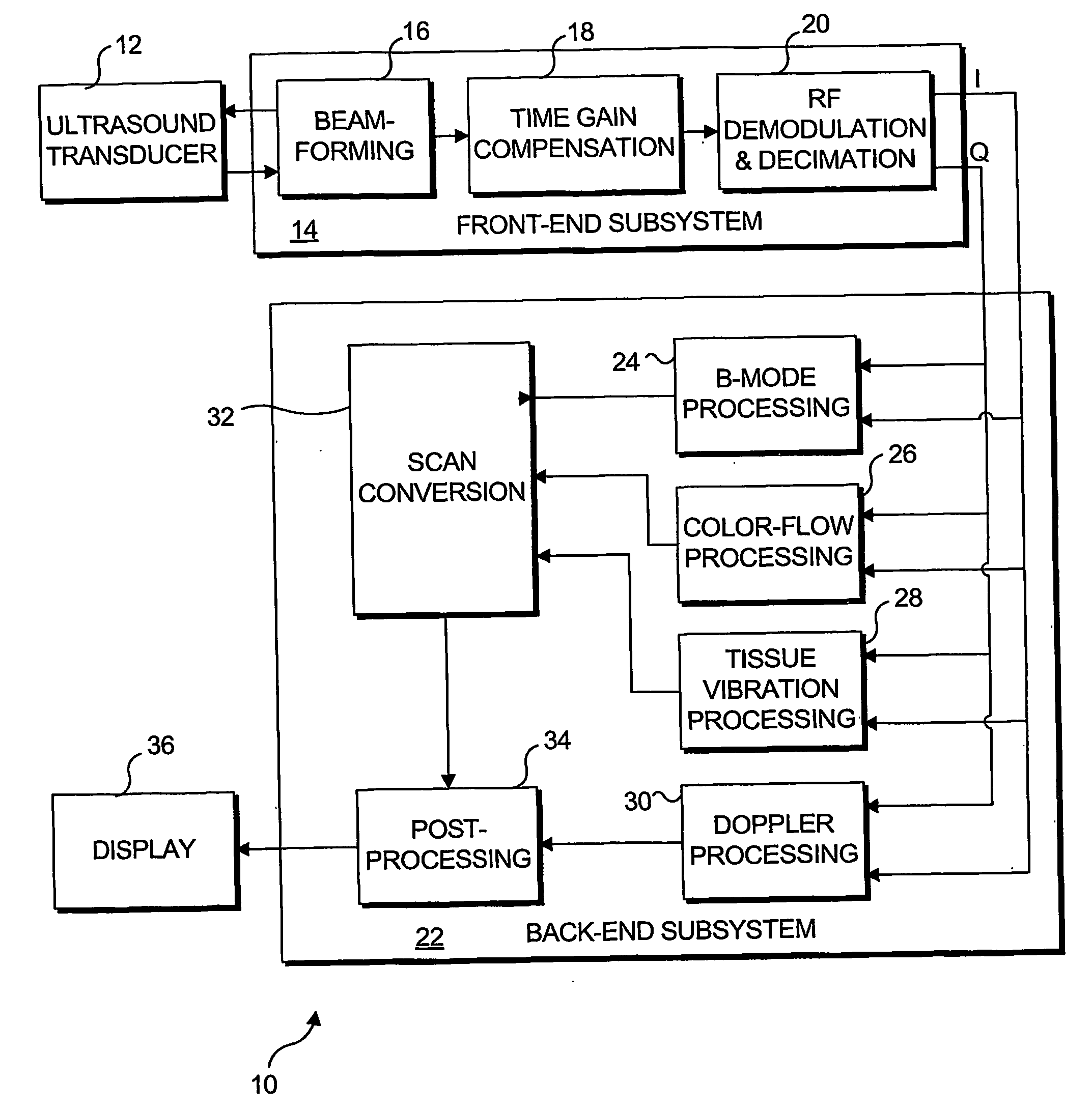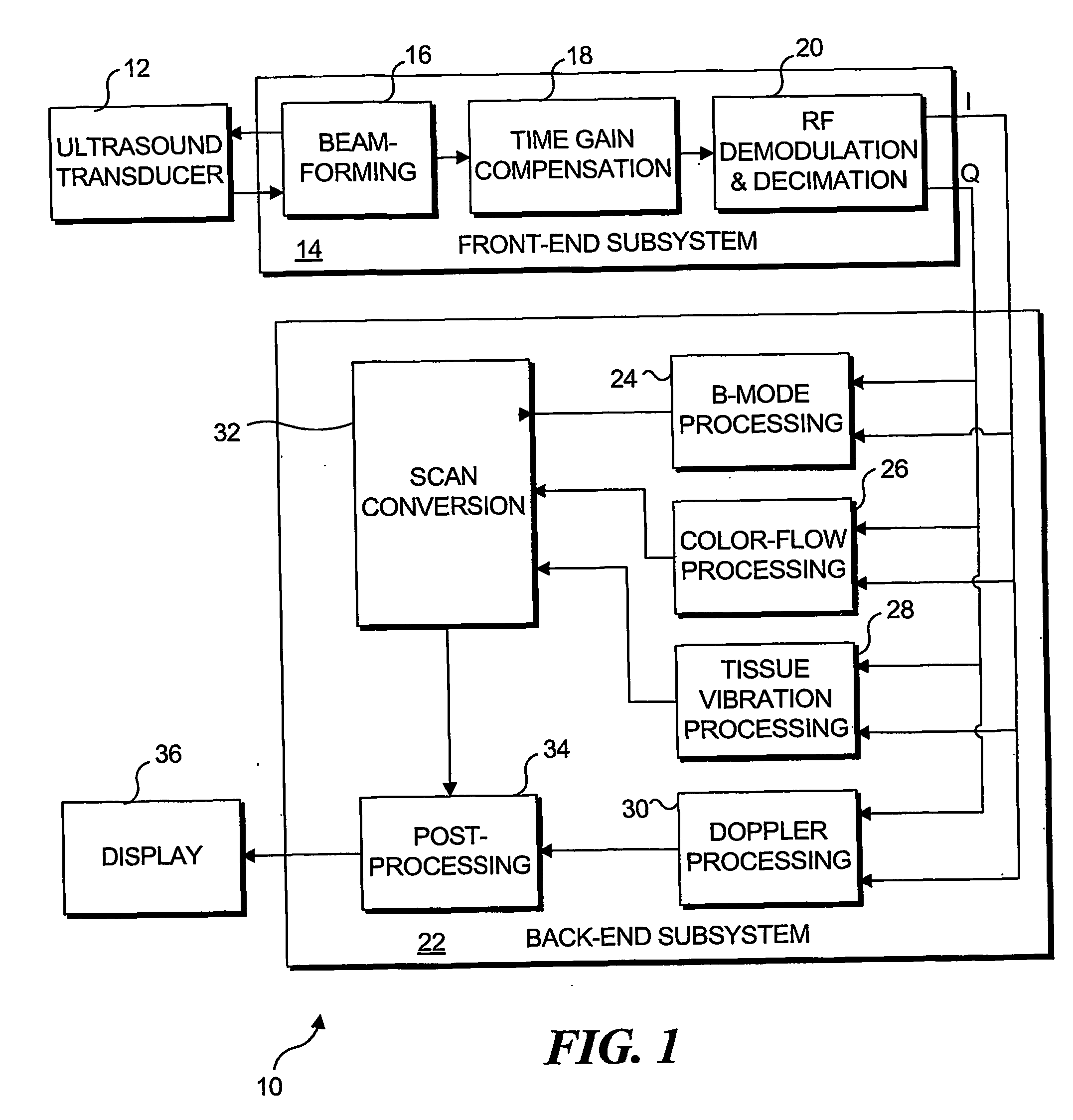Transcutaneous localization of arterial bleeding by two-dimensional ultrasonic imaging of tissue vibrations
a tissue vibration and ultrasound imaging technology, applied in the field of tissue vibration identification, can solve the problems of insufficient sensitivity for internal bleeding diagnosis, inability to suggest how to detect a bleeding site, and inability to image a limited area of interest, so as to improve the visualization of internal bleeding sites, localize bleeding in patients, and localize bleeding.
- Summary
- Abstract
- Description
- Claims
- Application Information
AI Technical Summary
Benefits of technology
Problems solved by technology
Method used
Image
Examples
Embodiment Construction
Tissue Vibration Imaging System
[0031]FIG. 1 is a block diagram illustrating an ultrasound system 10, which is generally similar to a conventional ultrasound system, but which has been modified to include tissue vibration imaging and is thus usable in practicing the present invention. Ultrasound system 10 includes an ultrasound transducer 12 that transmits a signal, which is modulated with a carrier frequency, typically 1 MHz-15 MHz, using multiple cycles (i.e., 2-20 cycles). The transmitted signal is reflected by scatterers (not shown) along the beam path and is received after a time delay, which depends upon the distance of the scatter from the transducer. In an acquisition stage, the acoustic echoes received from the tissue are converted to electrical signals by the transducer, and these signals are digitized by analog-to-digital converters (not separately shown). A front-end subsystem 14 includes a beam former 16 that performs dynamic focusing, apodization, and steering of both...
PUM
 Login to View More
Login to View More Abstract
Description
Claims
Application Information
 Login to View More
Login to View More - R&D
- Intellectual Property
- Life Sciences
- Materials
- Tech Scout
- Unparalleled Data Quality
- Higher Quality Content
- 60% Fewer Hallucinations
Browse by: Latest US Patents, China's latest patents, Technical Efficacy Thesaurus, Application Domain, Technology Topic, Popular Technical Reports.
© 2025 PatSnap. All rights reserved.Legal|Privacy policy|Modern Slavery Act Transparency Statement|Sitemap|About US| Contact US: help@patsnap.com



